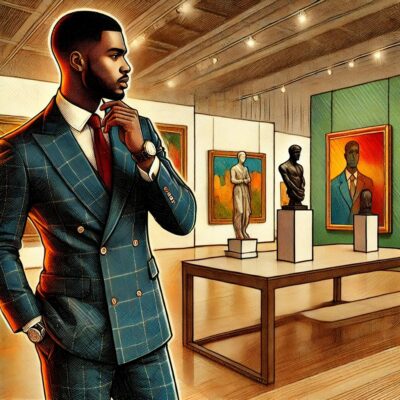Art curators manage art collections and organize exhibitions in museums, galleries, and cultural institutions. They research, acquire, and preserve artworks while crafting engaging displays to educate and inspire audiences.
What is a typical day in Art Curation?
– Researching artists, artworks, and historical context for exhibitions
– Planning and designing exhibition layouts and themes
– Writing interpretative materials, such as exhibit descriptions and catalogs
– Collaborating with artists, conservators, and other cultural professionals
What else might they be expected to do?
– Negotiate with artists or collectors to acquire new pieces for collections
– Organize public programs, lectures, or workshops to engage visitors
– Oversee the preservation and conservation of artworks
What type of training is needed for this career path?
– A degree in Art History, Museum Studies, or Fine Arts is typically required.
– A Master’s degree in a specialized area, such as Cultural Heritage, can enhance career prospects.
– Practical experience through internships or volunteering at museums or galleries is highly beneficial.
What kind of personality is needed to excel in this career path?
– Analytical, organized, and creative individuals excel in this field.
– Big 5 traits: Openness and Conscientiousness are crucial.
– Myers-Briggs types: INTJ or INFJ often align well with this career.
What kind of interests do people in this career path have?
– Passion for art, culture, and storytelling (Artistic and Investigative traits).
– Interest in problem-solving and understanding human behavior.
– Interests & Aptitude: Artistic (A), Investigative (I), and Enterprising (E)
Are there any innate skills or aptitudes required?
– Strong research and organizational skills for managing collections
– Communication skills to present ideas and engage audiences
– Attention to detail to ensure accurate documentation and preservation
What challenges can I expect to face if I pursue this career path?
– Managing budgets and securing funding for exhibitions or acquisitions
– Balancing creative vision with institutional goals or constraints
– Navigating the competitive job market in cultural institutions
What are the job prospects for this path in Kenya and Africa? What about International prospects for a Kenyan citizen?
– Kenya and Africa: Opportunities exist in museums, galleries, and cultural centers as art and heritage appreciation grows. The rise of contemporary African art provides additional opportunities.
– International: Art curators are in demand globally, particularly in major cultural hubs. Kenyan professionals with expertise in African art can bring unique perspectives to international institutions.
What should I focus on if I choose to pursue this career?
– Gain a strong foundation in art history and curatorial practices.
– Develop practical experience through internships at museums or galleries.
– Build a network within the art and cultural heritage community.
Which other careers or job roles can I progress to?
– Museum Director
– Art Conservator
– Exhibition Designer
– Art Critic or Writer
– Cultural Heritage Consultant

